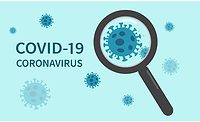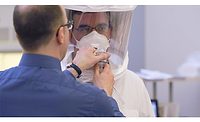AIHA Releases Recommendations on Reducing Risk of COVID-19 with Enhanced Engineering and Work Practice Controls
AIHA’s latest guidelines include recommendations on engineering controls, germicidal ultraviolet radiation, enhanced cleaning and disinfection, and personal hygiene and physical distancing.

As businesses, schools, retailers, and manufacturers manage reopening due to the pandemic, AIHA announced that it continues to expand its library of Back to Work Safely guidelines, white papers, and resources aimed at 26 different business and community sectors. The latest guidelines include recommendations on engineering controls (ventilation, enhanced filtration, and physical barriers), germicidal ultraviolet radiation, enhanced cleaning and disinfection, and personal hygiene and physical distancing:
- Reducing the Risk of COVID-19 Using Engineering Controls
- Employers Guide to COVID-19 Cleaning and Disinfection in Non-Healthcare Workplaces
- Effective and Safe Practices, Guidance for Custodians, Cleaning and Maintenance Staff
- Occupational Safety and Health Guide for Surface Disinfection Practices Using Germicidal Ultraviolet Radiation
- Infographic: Considerations on the Safe use of UVC Radiation for Surface and Air Disinfection
“While many solutions rely primarily on PPE, AIHA scientists and health professionals have developed more comprehensive guidelines which are specific and written with small to mid-sized businesses in mind,” said Lindsay Cook, CIH, CSP, AIHA president. “The guidelines include practical checklists that point out ways the employer, employees, customers and visitors can minimize their risk. The AIHA Back to Work Safely guidelines include engineering and work practice solutions that can complement the effective utilization of masks. They offer a detailed view of how ventilation can be an effective control in non-healthcare and non-industrial workplaces and how employers can develop specific cleaning and disinfection programs.”
AIHA and its volunteer committees of industrial hygienists urge employers to implement engineering controls in all indoor workplaces, even those outside of the healthcare industry, to reduce the spread of COVID-19. The broad category of engineering controls that may be effective against the SARS-CoV-2 virus includes the following:
- Physical barriers, enclosures, and guards
- Automatic door openers and sensors
- Local exhaust ventilation
- Enhanced filtration to capture infectious aerosols
- Devices that inactivate or “kill” infectious organisms
- Dilution ventilation and increasing outside air delivery
“Using a combination of available technologies, equipment, and time-tested methods to control infectious aerosols is the most reliable way to reduce the risk of disease spread,” said Cook.
All resources are available to download on www.backtoworksafely.org. AIHA’s website is located at www.aiha.org.
Looking for a reprint of this article?
From high-res PDFs to custom plaques, order your copy today!





